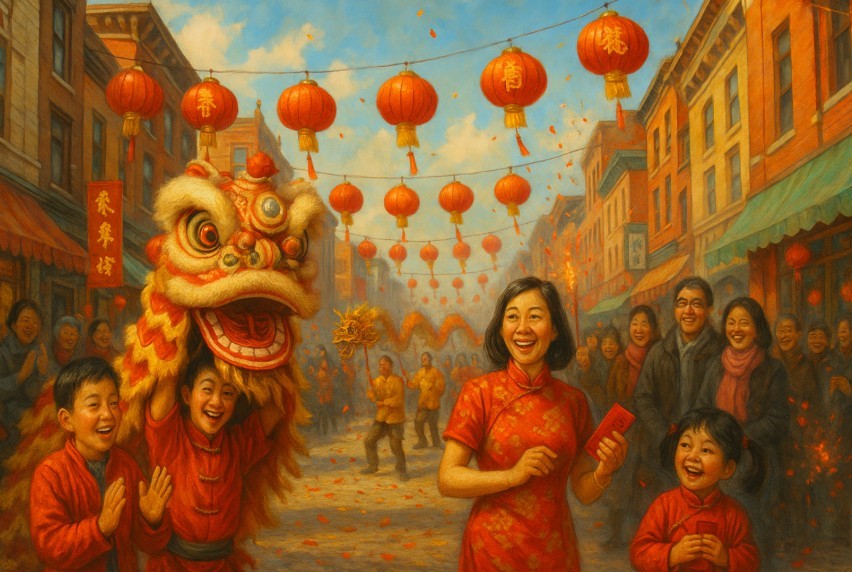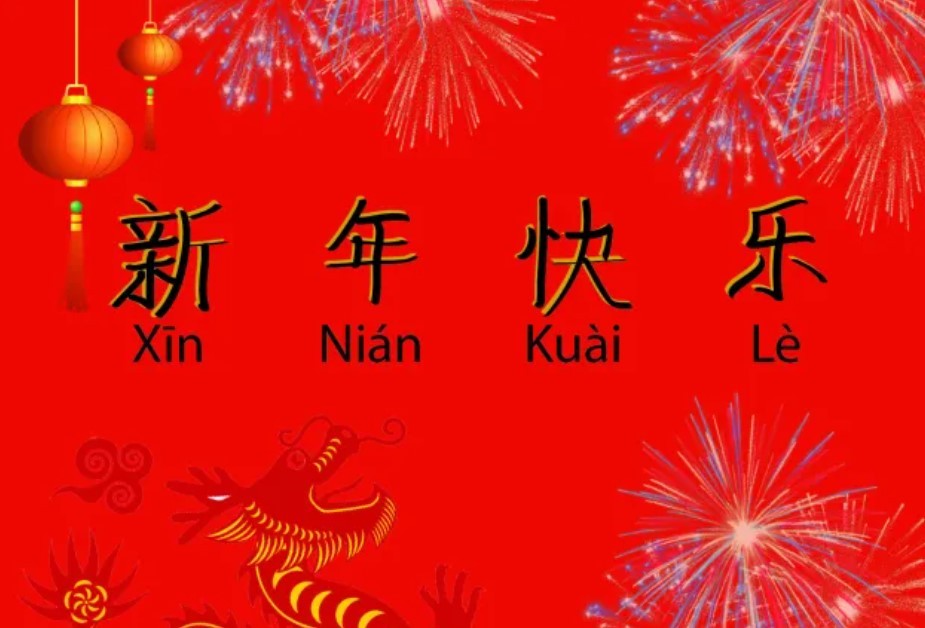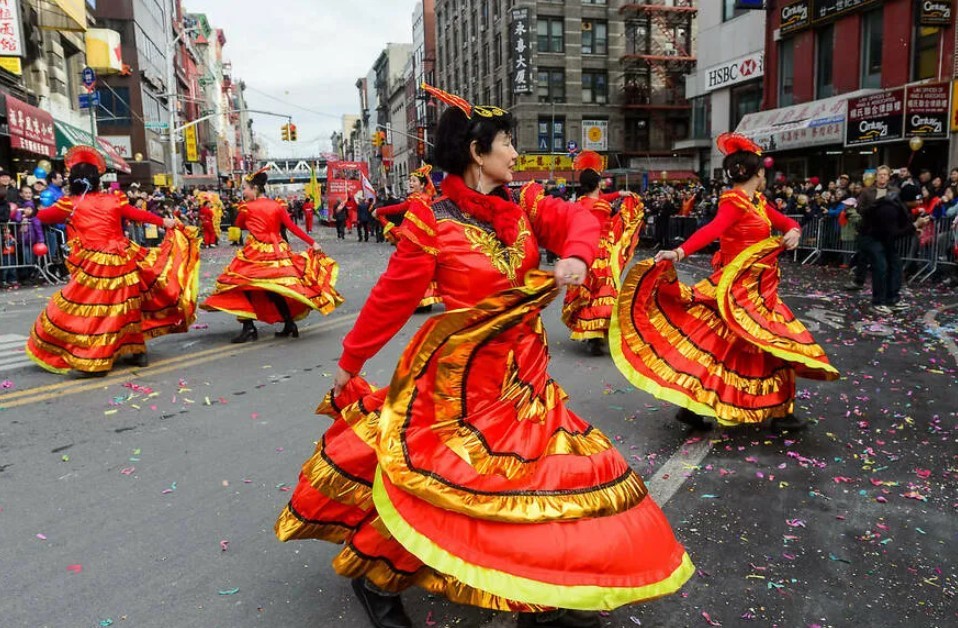How Lunar New Year Celebrated Around The World: Traditions And Customs
 |
| How Chinese (Lunar) New Year Celebrated Around The World: Traditions And Customs. Photo KnowInsiders |
When is Chinese New Year 2022?
The Chinese New Year falls on Tuesday, February 1, 2022, and although the public holiday period is from January 31 to February 6, the celebrations last for 16 days.
The culmination of the celebrations takes place on February 15, 2022, with the popular Lantern Festival, which is also known as Shangyuan Festival, and marks the final day of the festivities.
Next year will be the year of the Tiger, with 2021 being the year of the Ox.
What are the differences between Chinese New Year and Lunar New Year?
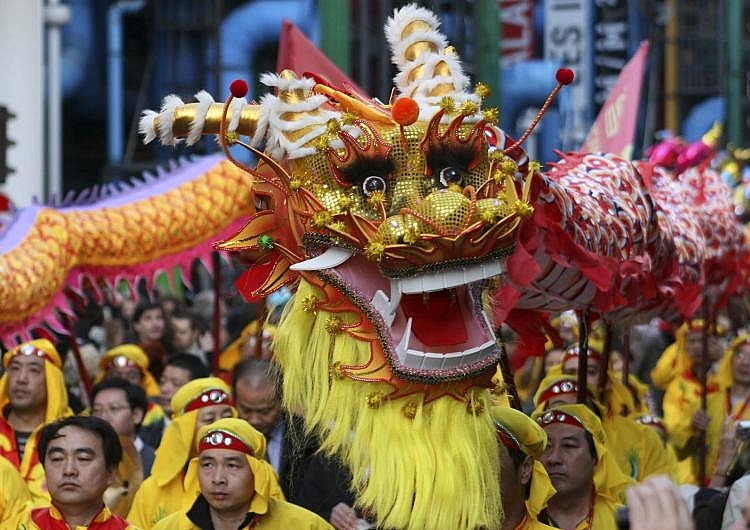 |
| Photo time and date |
Firstly, it has to be noted that the Chinese Lunar New Year is celebrated on the first day of the first month in the Chinese calendar, which is considered to be both solar and lunar.
Curiously, the Chinese New Year and Lunar New Year do not differ in China, but there are other countries where the latter is solely based upon the lunar calendar.
Hence, in those countries the Lunar New Year date is different, while there is another difference that should be noted. This is the duration of the celebration period, as people in China are enjoying a one-week public holiday, while countries such as South Korea and Singapore have a three-day holiday.
Which countries celebrate Lunar New Year?
Besides celebrating New Year’s Day on the first of January like most countries in the world, many Asian countries such as China, Singapore, Vietnam, and South Korea also observe Lunar New Year, marking the first moon in the lunar calendar. The celebration of Lunar New Year can last for the next 15 days until the full moon. In 2022, this is from February 1 to February 15.
How Does Taiwan Celebrate Lunar New Year 2022?
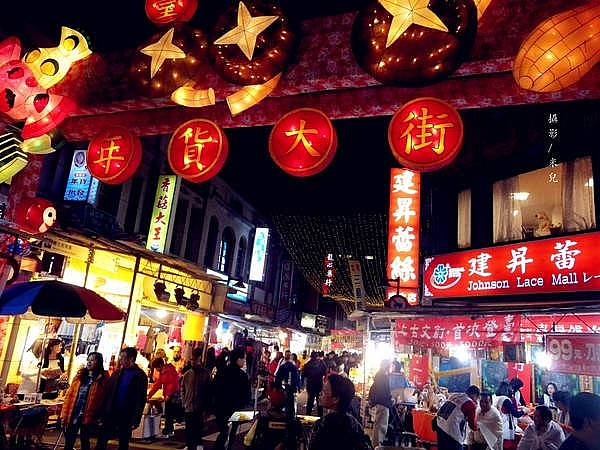 |
| Photo borderless house |
What to eat during Chinese New Year in Taiwan
There are quite a lot of traditions associated with the Lunar New Year here in Taiwan, many of which involve Taiwanese people’s favorite pastime – eating!
Foods play an integral role in Chinese culture, with many holidays and observances having their own particular dish or food that must be eaten on that day. And if you think Chinese New Year is any different, then think again.
While many businesses close down for the holidays, restaurants stay open and do a roaring trade. However, there are still some foods that every family must have in their kitchen come the New Year.
These must-eat foods, such as Nian Gao (dumplings) and pineapple are an essential part of the New Year celebration, and you can read a little more about them here. Just remember that when visiting a Taiwanese family during Chinese New Year, try everything on the table, but don’t finish the fish! It’s good luck to leave some leftovers.
Things to do during Chinese New Year in Taiwan
Unlike many other regions that celebrate the Lunar New Year, Taiwan has very few events organized during this holiday. Some locals will make their way to a temple hoping to be one of the first to pray to the gods at the stroke of midnight, while others visit places of worship on New Year’s Day. But that’s about it.
Here, the holiday is very much a family-oriented time of the year, so the majority of Chinese New Year traditions tend to take place in the family home. While other communities around the world may celebrate with parades and the like, Taiwanese prefer to spend their time in the company of their family, particularly their grandparents and parents. But that doesn’t mean that things quiet down – far from it.
While families often spend New Year’s Eve and New Year’s Day at home, they will often take short trips during the days that follow. For this reason, many of the island’s tourist attractions enjoy their busiest periods of the year during the holidays. Now, it might seem a little odd to suggest seeing the sights during such a busy time, but really it’s not. You have to remember that this is one of the happiest times of the year in Taiwan, so there’s always a great atmosphere no matter where you go.
Spend some money
This is also a time when you’ll find some absolute bargains in Taiwan’s many department stores. Business owners will offer huge discounts in the New Year in the hopes of enticing locals to spend some of their hard-earned bonuses. And with all those red envelopes exchanging hands at the start of the holidays, even those without bonuses have money to spend.
Set off some fireworks
There’s no doubt that while Chinese New Year is the happiest time of the year, it’s also the loudest. Locals set off firecrackers and fireworks throughout the night, particularly on New Year’s Eve, so you might want to join in the fun.
While there are no official fireworks displays during these holidays, just take a walk outside in any neighborhood, and you’re bound to find someone setting off some firecrackers. Take care though, the legality of setting off fireworks in Taipei City is still under review. And although it’s not illegal, it’s frowned upon in some areas.
Spend time with family
You may not have a Taiwanese family, but if you get the chance to visit a friend’s family home, then don’t let that opportunity slip by. Family is what Chinese New Year is all about, and if you can spend some time with yours or a friend’s family, then that’s precisely what you should do. Immerse yourself in the culture, play mahjong, eat delicious foods, and above all else, enjoy yourself.
How do Koreans celebrate their Lunar New Year?
 |
| Photo Pinterest |
Even though we all follow the usual calendar which goes from January to December, still every country has a special calendar for itself.
And we celebrate a few important festivals or holidays according to those calendars. Seollal is one such holiday spread across East Asia.
The festival falls as the very first holiday on the Lunar Calendar which East Asia follows.
But, Korea is not the only country that celebrates it, there are more which you will get to know inside.
When is Seollal 2022?
It falls on the first day of the Lunar calendar. In the year 2022, it will fall from December 31 to January 3rd.
Just like Chuseok, Seollal also has 3 days holiday. A day before the actual day, the very day, and the next after it.
Remember Chuseok and traffic jams? Well, Seollal is no different, since the majority of families visit their hometowns.
Is Seollal & Chuseok the same?
The answer is No. They two are different holidays. Let’s know how though?
The closest festival of Chuseok to the Americanized version will be Thanksgiving. The holiday has been viewed as the Thanksgiving the world celebrates.
While Seolnal or Seollal, is the Korean new year’s day.
Food
There is not only one specific food that Koreans eat on that day, but a couple of dishes are fixed to be made in the holiday.
For Chuseok, it’s Seongpyeon, a sweet dish filled with red beans, ground rice, sesame seeds, chestnuts, and sugar. Whereas Tteokguk, rice cake soup for Seolnal along with banchan.
| Do the Chinese also celebrate it? Yes, it is said that this tradition has been derived from China. |
Seollal in South Korea
It originated from China and people do respect that. However, over the years, the festival has changed so many traditions, especially in terms of food. Now, it has been celebrated as a new year overall Asia referring it as “Lunar New Year”.
“Lunar New Year is the more inclusive and accurate term as it applies to the holiday worldwide;” says Nancy Yao Maasbach.
Talking about food, they mostly eat seafood, soup, rice, and tteokguk (rice cake soup) that we discussed above, which is eaten throughout the year. However, it has a special significance on the day of Seolnal.
What clothes do they wear?
Talking about what do Koreans wear on Seollal. Well, there’s no difference in the attire since Hanbok is the traditional and national dress of the country.
How Vietnamese Families Spend Their Lunar New Year (Tet) Days
Watching firework on the New Year’s Eve moment
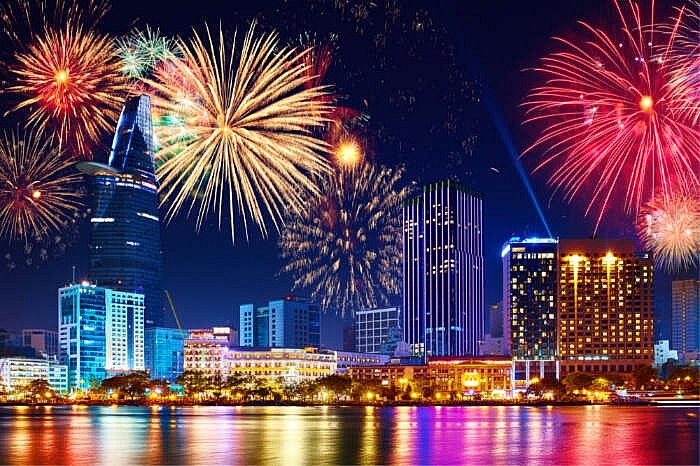 |
| Photo travel triangle |
Firework shooting to announce the arriving of a New Year is a yearly event expected by any Vietnamese on the night. The show of light is organized in big cities of Vietnam like Hanoi, Ho Chi Minh City, Hue or Da Nang, on the sky of the the best tourist attractions of the cities in order to provide best view and serve the largest number of viewers.
The sparkling art show on the sky in combination with the booming echoes of every shots seem to make people’s hearts pumping faster and becoming more exciting to welcome the New Year. What would be cozier than members in a family hand in hand enjoying the night under the hilarious atmosphere?
Family parties
Parties with full of delicious traditional dishes is the main theme for the whole holiday of Tet. From the last day of the year, family’s members all unite to enjoy “Tất Niên” Meal (the last meal of a Lunar New Year) to share all the sadness and happiness and experiences gained through the year. Not only that, the parties are also time to review family’s tradition, show respect to elders and strengthen relationships between members.
During Tet, family parties can start from nowhere and there is not any exact time table for them besides the three main meals: breakfast, lunch and dinner. A party may begin when some relatives or friends come to visit the host’s home at any time since foods and drink are stored at their fullest level during Tet.
New Year’s greetings
From the first day of the year, people start going around and greet their relatives and friends with the best wishes. This custom seems to be more common in villages than in big city because villagers live much more close than people in cities; also, they are often relatives of each other living in the same village. The order of people to be greeted is usually relatives first and then friends and colleague.
Elders’ house would be the first destinations in which parents’ house is the very first one. This custom is not simple exchanging wishes between guests and hosts, it is the chance for brothers and sisters and friends to meet each other after a long separated year.
Lucky money for children and elders
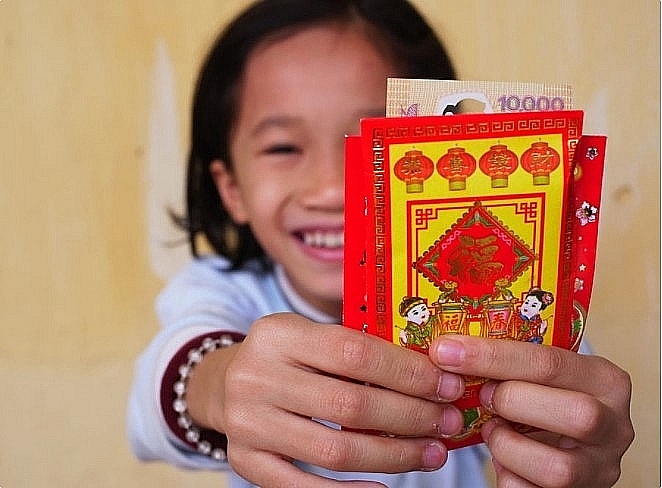 |
| Photo vietnamtimes |
This tradition is undoubtedly the most awaited Tet’s activity of all Vietnamese children. The custom is not a meaningless one since it does not only make children feel happier on Tet, it also educates them the value of money and how to save money for good purpose. Like its very definition, lucky money bring luck to children such as healthiness, intelligence and obedient and luck to the givers as well.
Visiting pagoda
The lofty tradition reflexes religious belief of Vietnamese people has been preserved and developed for thousands years. People coming to pagodas and temple to pray for a happy new year with full of wishes may come true and showing respect and appreciation to Buddha and Gods who have been protecting and granting their wishes. Visiting pagodas could also a good way to enjoy Tet’s atmosphere and forget about all the stress and worry of the previous year in the sacred space there. Vietnamese families usually visit pagodas and temples with all of their members as well as going in grand family as a way to show sincerity.
How Is Lunar New Year Celebrated In Malaysia?
 |
| Photo gtelocalize |
Also known by the name of Lunar New Year or the Spring Festival, the event is observed by the Chinese communities throughout the world, regardless of where they are. It is a cultural event and can a religious one too for the Buddhists, Confucians and Taoists who offer prayers. As the festival approaches, friends and relatives still exchange New Year greeting cards with each other despite the technology era. A family reunion dinner will be held on the eve of the New Year. During this time, bad language and any unpleasant or sensitive topic is strictly discouraged. It’s always best to be in one’s good behavior and only say good and auspicious things.
On Chinese New Year day, everyone is abuzz with various activities, including decorating with duilian (a pair of scrolls with poetry written), giving red packets or angpau or ang pow containing money, visiting friends and families, having family meals and gatherings, playing cards with small bets of money and watching dragon or lion dances. While each country may celebrate the New Year in an almost similar way, the concept of open house is normally practiced in Malaysia where the homes are open for friends and family to visit, regardless of race and religion. The country’s leaders organize open houses too on a larger scale, often held at a community hall to accommodate the crowds of locals and foreign visitors who come to greet their leaders and tuck into festive goodies. Just like any other festival in Malaysia, Chinese New Year is basically the time of the year to get together with family and friends.
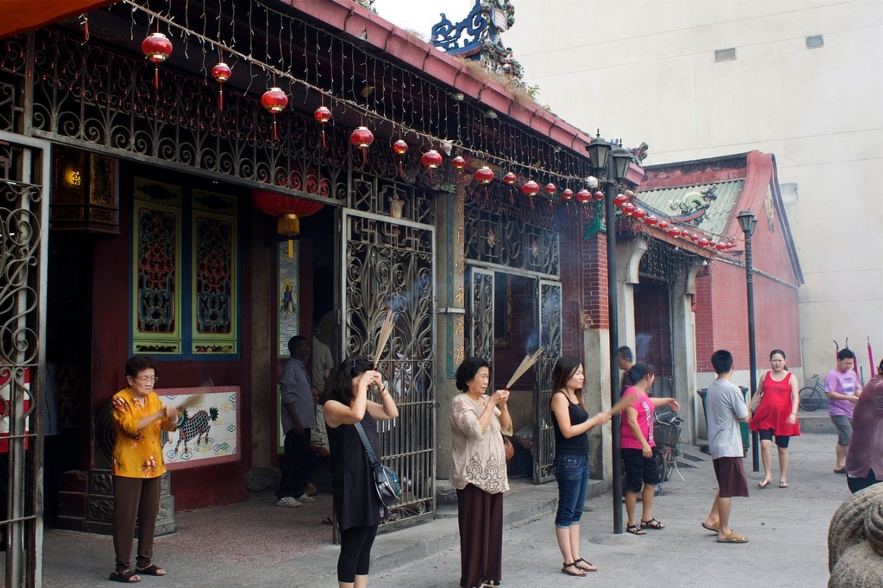 |
| Photo rove |
Chap Goh Mei
Chinese New Year is celebrated for fifteen days with the main focus on the first three days. Chap Goh Mei, or the fifteenth day of Chinese New Year, is once again celebrated with much enthusiasm. Homes are again decked in brightly decorated lights and legend has it that young and unmarried women could throw tangerines into the sea if they wish to get a good husband. This tradition has undergone a modern twist where the females still toss Mandarin oranges into the sea but now they have written their telephone numbers on them. Men in boats will then row over and fish out the oranges! The singles carry out this practice good-naturedly and have fun with their friends on that final night of the New Year celebrations. Once Chap Goh Mei has passed, daily life resumes with each hoping to have a prosperous year ahead.
Fireworks
In Malaysia many people light fireworks during Chinese New Year. At Chinese New Years Eve, you can enjoy fireworks until the deepest hours of the night. Also at other days, people will light fireworks. The best chance to witness this is in the more Chinese areas in Kuala Lumpur (like Chinatown, Old Klang Road/Kuchai Lama and many areas in Petaling Jaya) and also in cities like Georgetown (at Penang Island), Ipoh and Malacca. Hokkien Chinese in Malaysia also light a lot a fireworks at the ninth day of Chinese New Year, in celebration of the birthday of the Jade Emperor.
Chinese New Year in Kuala Lumpur
When you are staying in Kuala Lumpur during Chinese New Year you should definitely visit the Petaling Street area in Chinatown. Here the Chinese temples are crowded with locals that come there to pray. You can witness lion dances and people lighting fireworks. All shopping malls in the city showcase their Chinese New Years theme. They are all decorated and during the first few days you will be able to witness lion dances within the stores. This is done to make sure the store is blessed and that business will be great that year. The first days of Chinese New Year are the only days of the year that you will witness many stores closed, as most of the Chinese business owners are visiting their relatives in their home towns or home countries.
Chinese New Year on Penang Island
Especially Penang is a great place to visit during Chinese New Year. There are many beautiful temples in Georgetown, and all are crowded with Chinese Malaysians that come there to pray (mostly for health and prosperity during the new year). One of the most important temples at Penang Island, Kek Lok Si Temple, is especially interesting to visit. At night millions of colorful lamps transform the whole area in a beautiful scene. Locals come every night to witness the lights being turned on, it is a wonderful sight.
| Other Countries It is estimated that about 1.5 billion people around the world observe Lunar New Year. Many of which are ethnically Chinese around the world. In other countries such as Singapore, the Philippines, and Cambodia, people celebrate Lunar New Year by watching fireworks, dragon dances, cooking traditional foods and exchanging red envelopes. |
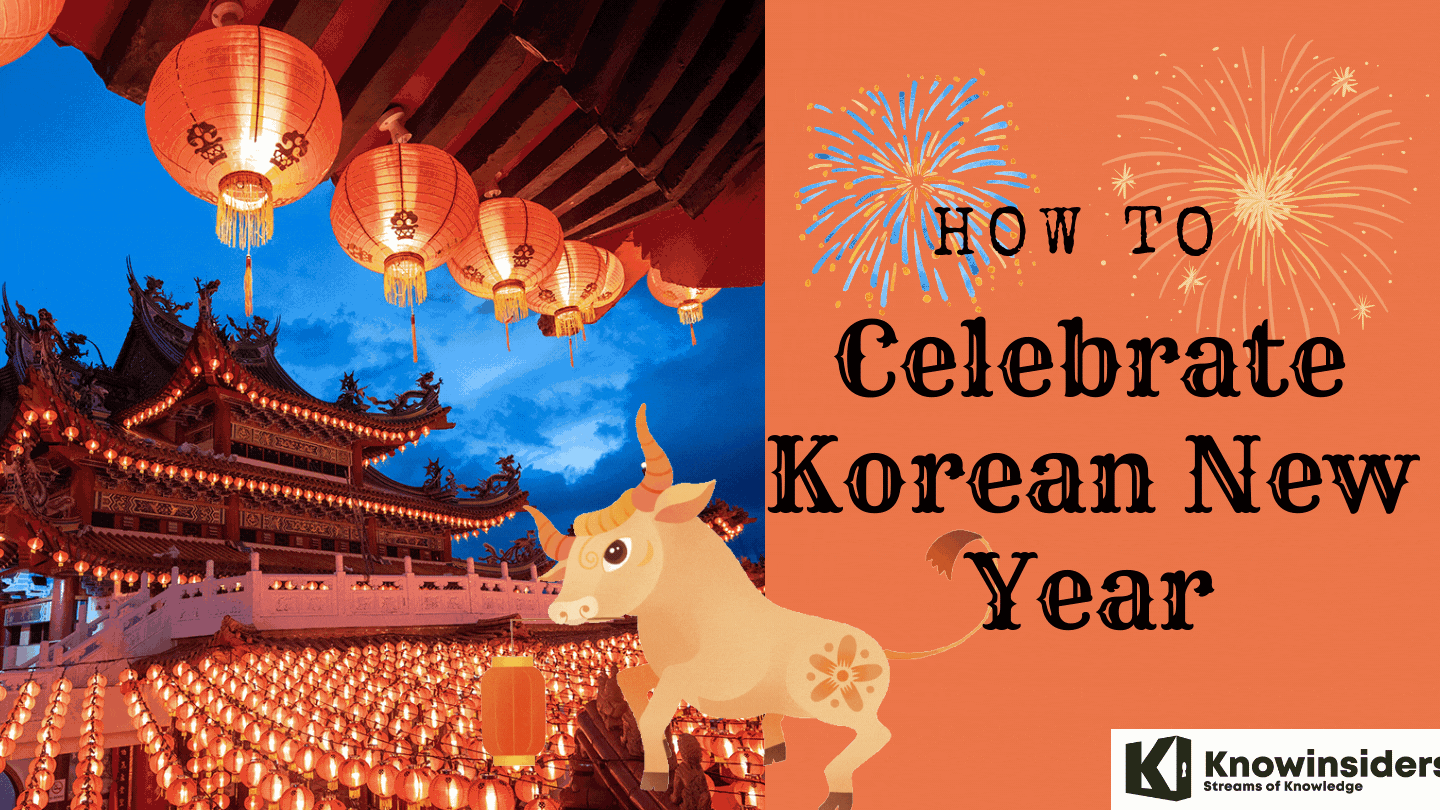 How to Celebrate Seollal - Korean New Year: Traditions, Customs and Taboos How to Celebrate Seollal - Korean New Year: Traditions, Customs and Taboos If you are looking for how to celebrate Korean New Year, you have come to the right place. Here are the traditions, customs, symbols, and ... |
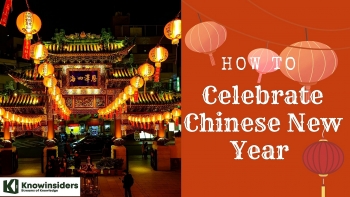 How to Celebrate Chinese New Year: Traditions, Customs and Taboos How to Celebrate Chinese New Year: Traditions, Customs and Taboos China has many interesting traditions, customs legends and stories told about the New Year, and there is a lot of facts that we do not ... |
 How To Celebrate Japanese New Year: Traditions, Customs and Taboos How To Celebrate Japanese New Year: Traditions, Customs and Taboos New Year is only a step away, and if you want to learn more about how Japanese celebrate this time, keep reading the article below. |


